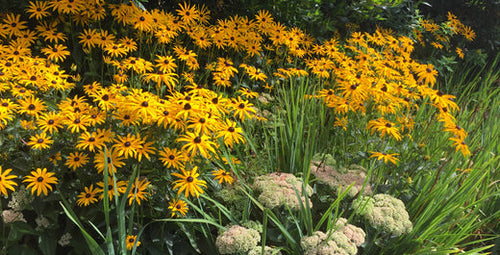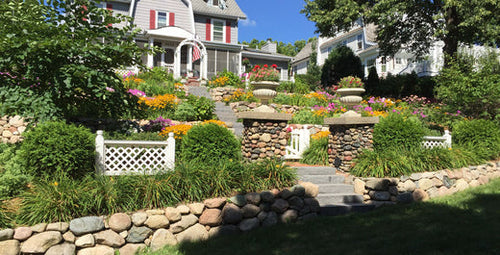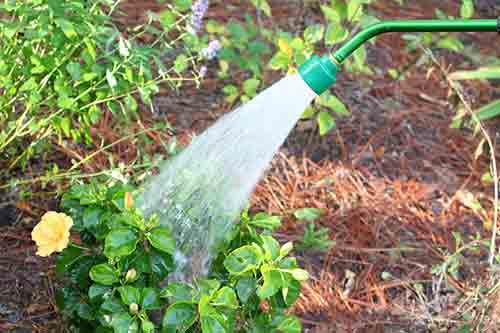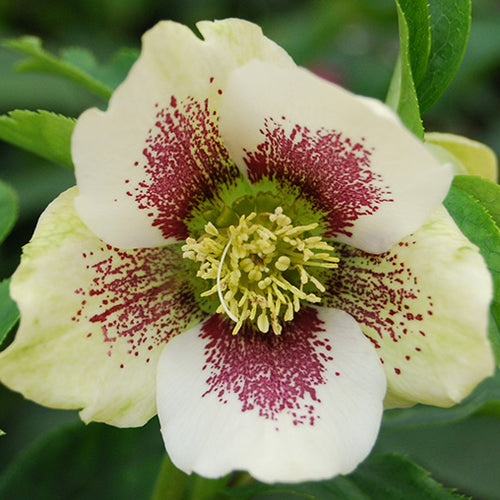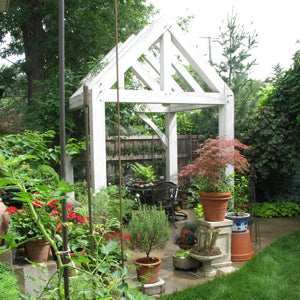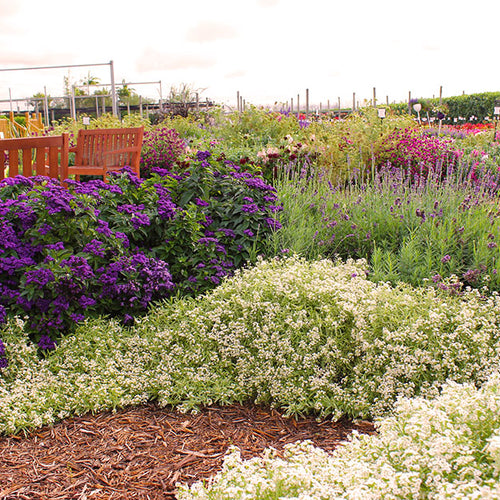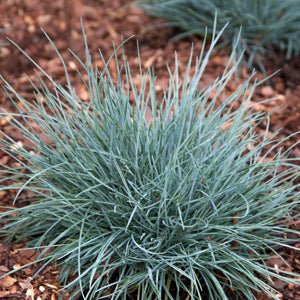But sadly, living in Iowa at the time, I knew I could never duplicate that look in my home garden. Sure, I do grow tropical hibiscus in pots during the summer (they love Iowa’s hot, humid climate), but come fall, they fold up shop after the first frost blackens their foliage. (Note: you can save tropical hibiscus if you move them inside during the winter; see how.)
 Then, one day, I was visiting a public garden in Chicago and stumbled across my first hardy hibiscus, Disco Belle Pink (in photo at left). It had huge, dinner-plate sized blooms with white and pink petals and a red eye. You couldn’t miss it even though it was planted in a huge mixed bed of other perennials. On top of that, they told me it was winter hardy even in Chicago! I don’t know where I’d been all my life, but clearly I was missing out on hardy hibiscus.
Then, one day, I was visiting a public garden in Chicago and stumbled across my first hardy hibiscus, Disco Belle Pink (in photo at left). It had huge, dinner-plate sized blooms with white and pink petals and a red eye. You couldn’t miss it even though it was planted in a huge mixed bed of other perennials. On top of that, they told me it was winter hardy even in Chicago! I don’t know where I’d been all my life, but clearly I was missing out on hardy hibiscus.
Since then, I’ve always included hardy hibiscus in my garden. All they need is full sun and hot weather. In fact, once the summer heats up you can almost watch these flower factories put out new growth. The plants do get pretty large, often becoming 4 feet tall and wide, so you need to give them plenty of elbow room in the garden. In photo below, for example, a hardy hibiscus is almost as large as a mature Limelight hydrangea.
Hardy hibiscus flowers are usually some variation of pink, red, or white with big, showy leaves that are either bright green or maroon. Some top picks include: Disco Belle Pink, Luna Rose, Mars Madness, Midnight Marvel, Peppermint Schnapps, Mocha Moon, Luna Pink Swirl, Luna Red, and Luna Blush.

In the North, hardy hibiscus dies back to the ground after the first freeze, but once warm weather returns in the spring they pop out of the ground like a Jack-in-a box. The plants are also resistant to insects, diseases, and hungry deer. It’s a must-have perennial for anyone who loves big, easy-care flowers.
Written by Doug Jimerson










